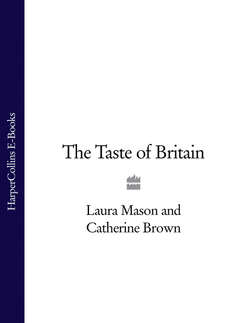Читать книгу The Taste of Britain - Hugh Fearnley-Whittingstall - Страница 153
HISTORY:
ОглавлениеAn early literary reference to the dough cake is dated to the mid-eighteenth century, comes from Devon, and is recorded as a term of affectionate abuse for a thick-headed person (OED). This suggests dough cakes were well known, but gives little indication of the recipe. Dough cakes in modern England are similar in composition to lardy cakes, but the added ingredients are evenly distributed through the dough rather than being carefully folded in. A tradition mentioned by Flora Thompson (1939) may have some bearing on this. In rural Oxfordshire, amongst poor households who had no ovens for baking, a ‘baker’s cake’ was made for harvest teas. ‘The housewife provided all the ingredients excepting the dough, putting raisins and currants, lard, sugar and spice in a basin which she gave to the baker, who added the dough, made and baked the cake, and returned it, beautifully browned, in his big oven. The charge was the same as that for a loaf of the same size, and the result was delicious.’ Since the price of this cake was no more than the cost of the dough, it had to be simpler than lardy cakes which require laborious rolling and folding; presumably the baker simply kneaded the additions through the dough after bulk fermentation, much as today. Dough cakes are made in the same general area as lardy cakes. In Devon, they are most often found on the eastern side of the county. Just over the county border in Dorset may be found the Portland dough cake—described by the WI earlier in the century (Raffael, 1997).
